You’re probably familiar with the popular goldfish, and you might even have one as a pet. But did you know that goldfish are quite sensitive creatures? One condition that goldfish can develop is a hole in the head, which is also known as head and lateral line disease.
This article will explore the causes, symptoms, and treatments for Hole-in-the-head disease in goldfish.
What Is Goldfish Hole in the Head Disease?
Hexamita is colloquially known as “hole in the head disease” because one of the most distinctive and noticeable symptoms is the presence of circular pits or holes that form on the fish’s head. It is caused by the Hexamita parasite, which is a flagellated protozoan. The disease is also known as “head and lateral line erosion”. It primarily affects freshwater fish, especially goldfish and cichlids.
While the Hexamita parasite can infect both wild and captive fish, it is much more common in the latter. This is likely because captive fish are often kept in crowded and unsanitary conditions, making them more susceptible to infection. Fish typically have a more robust immune system and are less likely to contract the disease in the wild.
The Hexamita parasite enters the fish’s body through the gills, travels to the intestine, and multiplies. The parasite then damages the intestinal lining, leading to several serious health problems, including malnutrition, dehydration, and death.
Risk Factors: What Causes Hexamita?
Several different factors can increase a fish’s risk of developing Hexamita. These include:
Poor Water Quality
One of the most common risk factors for Hexamita is poor water quality. This is often seen in captive fish kept in small, cramped tanks with poor filtration. These create perfect conditions for the parasite to thrive, multiply, and spread.
Other elements of poor water conditions include high ammonia and nitrite levels and low oxygen levels. Under such circumstances, fish are much more stressed, and their immune system is weaker, making them more susceptible to disease.
To keep your fish healthy and avoid Hexamita, it’s crucial to maintain good water quality in their tank. This includes regular water changes, using a quality filter, and ensuring that ammonia and nitrite levels are at 0ppm.
Low-Quality Diet
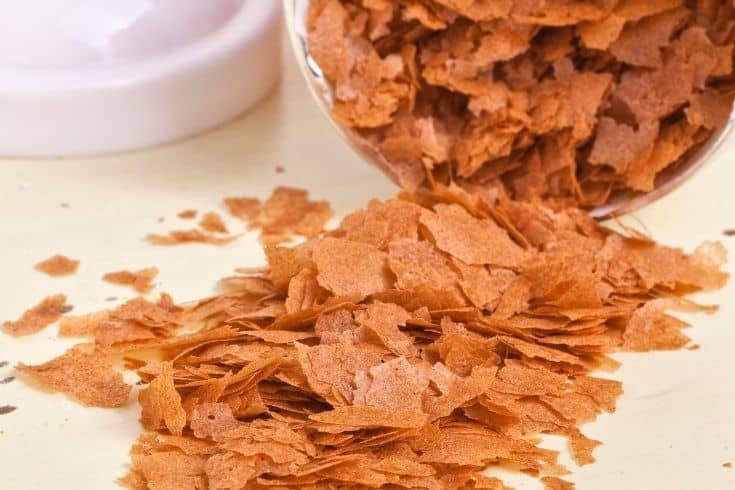
Another common cause of Hole in the Head disease is a bad diet. Like us, goldfish and other freshwater fish require a well-balanced diet to stay healthy. A diet lacking in specific vitamins and minerals can weaken the fish’s immune system and make them more susceptible to disease.
Providing a high-quality, varied diet is especially important for goldfish because they are prone to developing Hexamita. This is due to the fact that goldfish are omnivores, which means they require both plant and animal matter to stay healthy.
Feeding your pet goldfish an incorrect or inadequate diet is one of the surest ways to make them sick. To avoid this, it’s important to provide them with a varied diet that includes both fresh and frozen foods. You could also try opting for one of these fish food substitutes.
Crowded Conditions
Overstocked tanks pose a source of profound stress to fish, suppressing their immune system and making them more susceptible to disease. This is one of the reasons Hexamita is so common in goldfish.
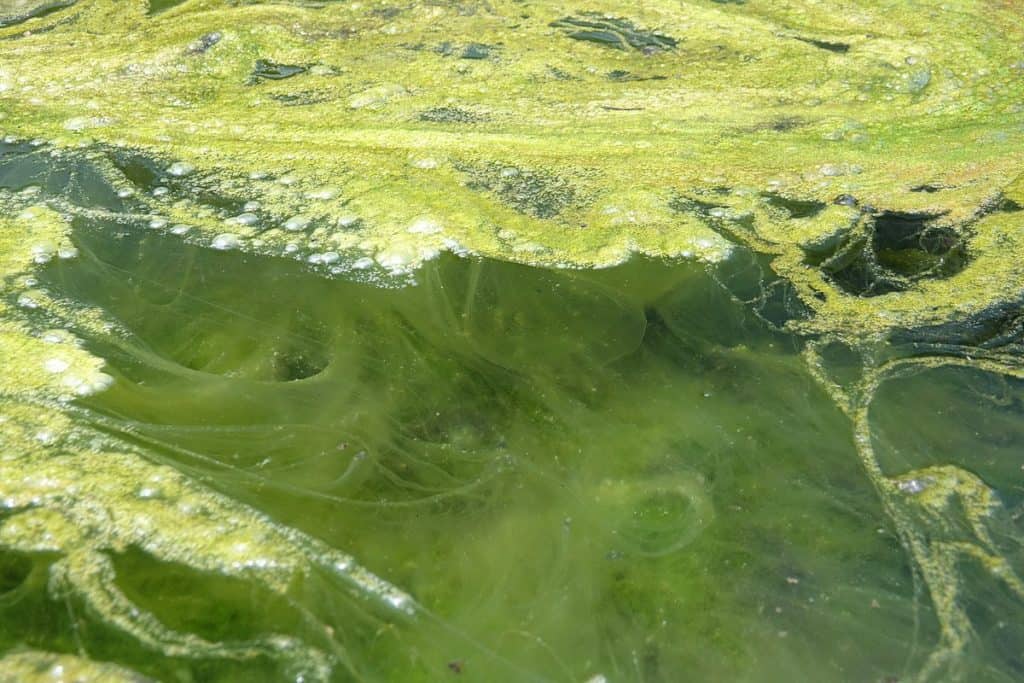
Many fishkeepers have the mistaken impression that goldfish can be kept in a tiny little bowl, when in reality they need at least 10 gallons of water per fish. If you’re keeping goldfish, it’s important to provide them with plenty of space. Nothing stresses a goldfish out more than an overcrowded tank, which can quickly lead to Hexamita.
Crowded conditions also cause additional stress because they make it difficult for fish to find food. When fish are constantly competing for food, they become stressed, leading to many health problems, including Hexamita. Territorial disputes are also common in overcrowded tanks, leading to physical injuries.
Symptoms of Hole in the Head Disease
Having discussed the causes of Hexamita, let’s look at some of the most common symptoms.
Presence of Pits in the Head
The first and most common symptom of Hexamita is the presence of pits in the head. These small, crater-like lesions are caused by the parasite eating away at the fish’s skin. These pits may be barely visible in the early stages, but they will take on a more obvious hollow appearance as the disease progresses.
A good way to tell if your fish has Hexamita is to look for these small pits on the head. If you see any, it’s good to take your fish to the vet or the nearest fish store for a diagnosis.
When in doubt, it’s always better to err on the side of caution and get your fish checked out. A timely diagnosis can make all the difference in whether or not your fish recovers from Hexamita.
Erosions Along the Lateral Line
The lateral line is a row of pores that run along the length of a fish’s body. These pores are connected to nerves and are used by fish to detect movement in the water.
In fish with Hexamita, these pores often become eroded and inflamed. You will notice visible sores along the lateral line, which can be pretty painful for the fish. The entire lateral line may be eroded in severe cases, leaving the fish’s body open to infection.
The consequences of an eroded lateral line are more than just cosmetic. This important sense organ allows fish to orient themselves in the water. They are easy prey for other fish or even animals entering the aquarium without it.
Loss of Appetite
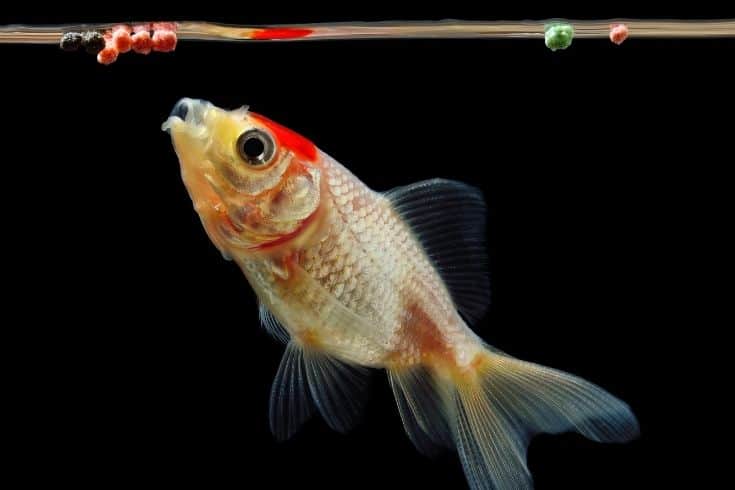
Another common symptom of Hexamita is a loss of appetite. This can be caused by the presence of the parasite in the fish’s gut, which interferes with its ability to digest food properly. In some cases, the fish may stop eating altogether.
A loss of appetite can have a number of other causes, so it’s important to rule out any other potential problems before attributing them to Hexamita. If your fish is not eating, the first thing you should do is check the water quality. Ammonia and nitrite levels that are even slightly elevated can cause fish to lose their appetite.
If the water quality is fine, then it’s likely that your fish is sick and you should take it to the vet or fish store for a diagnosis.
Lethargy
The last and most common symptom of Hexamita is lethargy. This is when the fish becomes sluggish and stops swimming around as much as it normally would. In some cases, the fish may even stop swimming altogether and just lie at the bottom of the tank.
Like appetite loss, lethargy can have a number of causes, so it’s important to diagnose your fish accurately before attributing it to Hexamita. However, if your fish displays more obvious symptoms such as pits in the head or eroded lateral lines, then it’s likely that the cause is Hexamita.
Treating Goldfish Hole in the Head Disease
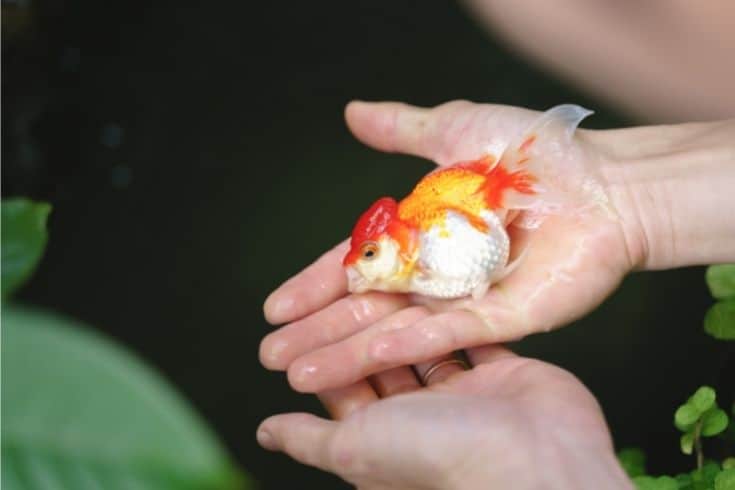
Hexamita is rarely fatal, though it can cause permanent disfigurement if left untreated. In most cases, the disease can be cured with a course of antibiotics. Here are some things to keep in mind when treating Hexamita:
Maintain Ideal Tank Conditions
The most important thing to remember when treating Hexamita is maintaining good water conditions. A less-than-ideal tank environment can stress fish and make them more susceptible to disease. Your goldfish should never find themselves living in poor living conditions that make them sick.
An excellent way to keep your tank clean is to do a 25-50% weekly water change. This will remove any build-up of toxins in the water and keep your fish healthy. In addition to water changes, you should also vacuum the gravel at the bottom of the tank to remove any uneaten food or waste.
Tank size also plays a role in Hexamita. Goldfish are large fish and need a lot of space to swim around. A good rule of thumb is to have at least 10 gallons (37.9 L) of water for each goldfish.
Quarantine Affected Fish
If you have more than one fish in your tank, it’s important to quarantine the affected fish in a hospital tank. This serves two purposes: it prevents the spread of disease and makes it easier to treat the fish.
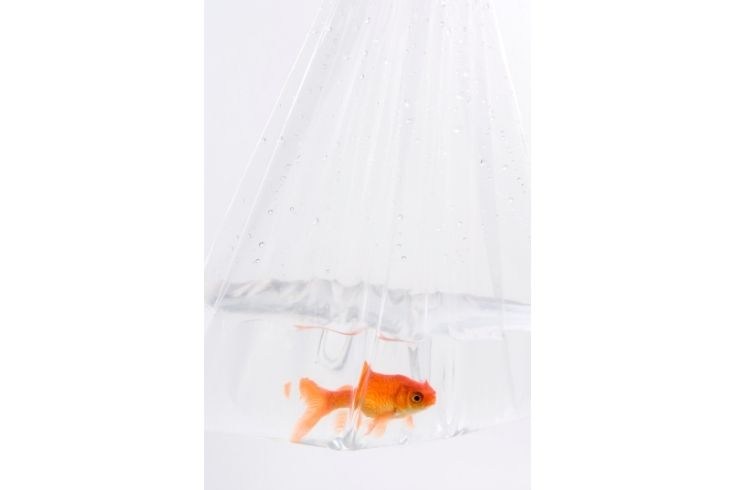
In a hospital tank, you can maintain ideal water conditions and treat the fish with antibiotics without worrying about the other fish in the tank.
You will need a 10-gallon (37.9 L) tank, an air pump, airline tubing, and a sponge filter to set up a hospital tank. It would help if you also used a de-chlorinator to remove the chlorine from the tap water. Once the tank is set up, you can add the affected fish and start treating it with antibiotics and other medication.
Administer Medication
Hexamita is a parasitic infection, so the most common course of treatment is antibiotics. The two most commonly used antibiotics for Hexamita are metronidazole and nitrofurazone.
These antibiotics are available in both oral and injectable forms. In the case of the former, you would put medication into gel food and feed it to your fish. In the latter case, you would need to take your fish to the vet for an injection.
Though not a bacterial infection, antibacterial medication may also be necessary if a secondary infection has taken hold. Consult your vet for the best course of treatment.
The Takeaway
Goldfish hole-in-the-head disease is a common condition that affects goldfish, but thankfully, it is also treatable. Prevention is the best form of cure, but the next best thing you can do if your fish has contracted the disease is to act quickly and decisively. We hope this article has been helpful in this regard. Understanding the causes, symptoms, and course of treatment for goldfish hole-in-the-head disease is the first step in being able to treat your fish effectively.
If you have any lingering questions or concerns, please don’t hesitate to leave a comment below or reach out to us directly. We’re always happy to help! And do us a solid: if you found this article helpful, please share it with your fellow fishkeeping friends! Happy fishkeeping!
